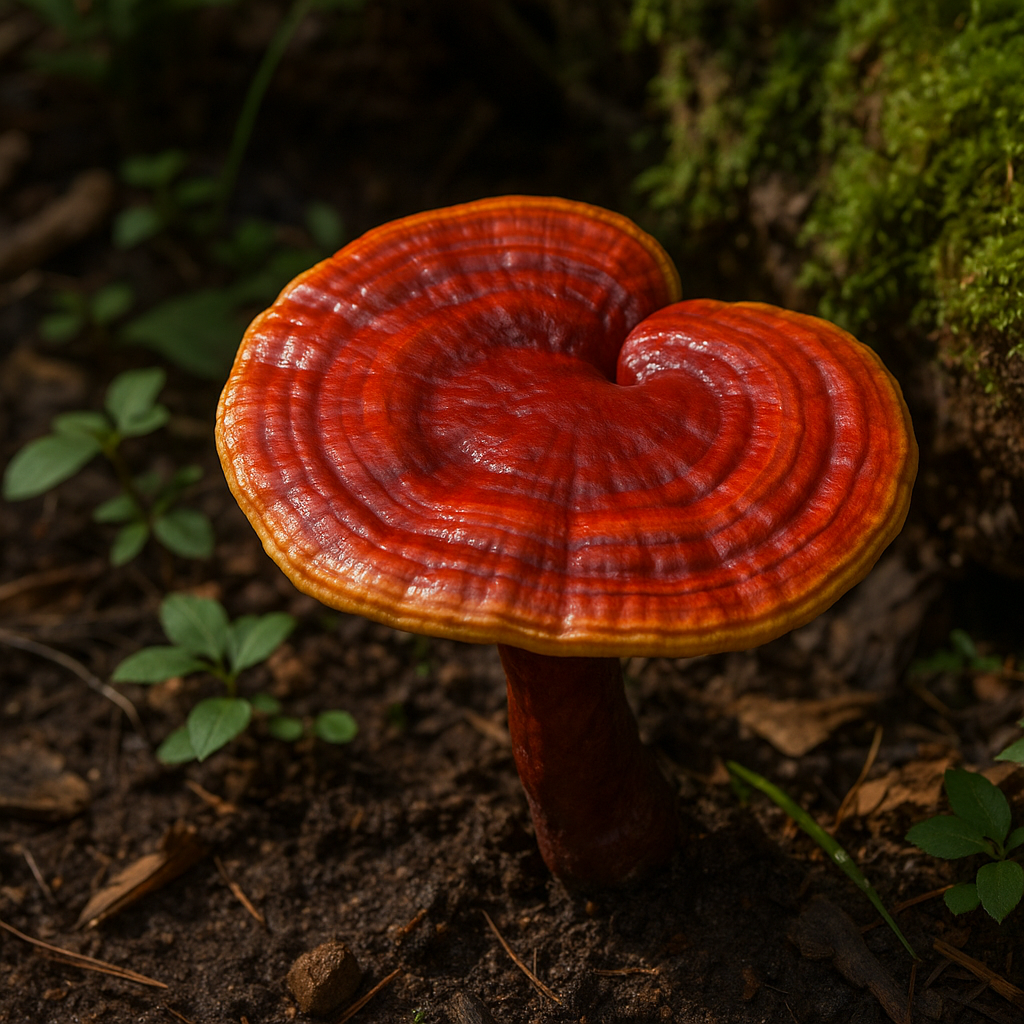
Super Reishi Benefits for the Body
🧠 Overview
Red Reishi mushrooms (Ganoderma lucidum), widely used in traditional Asian medicine, are rich in bioactive compounds that support immune modulation, neuroprotection, and metabolic regulation. Reishi's benefits for the body are increasingly recognized in scientific literature for their potential therapeutic effects on both body and brain, particularly in preventing age-related diseases and neurodegeneration.
🔬 Mechanism of Action
Red Reishi's effects are primarily mediated through two major classes of compounds:
- Polysaccharides: These complex carbohydrates, especially β-glucans, have significant immune-enhancing and antioxidant activities. They stimulate macrophages, T-cells, and natural killer (NK) cells, helping the body combat infections and tumors.
- Triterpenoids: These include ganoderic acids, lucidenic acids, and ganoderals. They contribute to anti-inflammatory, antioxidant, hepatoprotective, and neuroprotective effects by modulating transcription factors (e.g., NF-κB), and suppressing oxidative stress and inflammation.
🧩 Key Active Compounds
|
Compound Class |
Specific Chemicals |
Noted Effects |
|
Triterpenoids |
Ganoderic acids (A, F, S1), Lucidenic acids (D1), Ganoderal A, Ganoderol B, Applanoxidic acid A |
Anti-cancer, neuroprotective, hepatoprotective, antioxidant |
|
Polysaccharides |
GLP-I to GLP-IV (β-glucans, mannose, galactose, fructose based) |
Immunomodulatory, antioxidant, anti-inflammatory |
|
Others |
Ganolucidic acid A, Ergothioneine |
Promotes NGF/BDNF-like effects, antioxidant, cognition-enhancing |
📊 Evidence Synthesis
- Neuroprotection: Ganoderic acid S1, methyl ganoderic-A/B, and ganolucidic acid A promote neuronal survival by mimicking nerve growth factor (NGF) and brain-derived neurotrophic factor (BDNF) activity (Phan et al., 2017).
- Anti-aging: Extracts of G. lucidum were found to enhance mitochondrial function and reduce oxidative stress in brain, liver, and heart tissues (Rezaeian & Pourianfar, 2023).
- Immune and Metabolic Support: Polysaccharides and triterpenoids improve immune cell activity, normalize blood sugar, and support detoxification without significant toxicity (Pascale et al., 2023).
📌 Source Analysis
|
No. |
Source |
Key Insight |
|
1 |
Shows anti-aging and neuroprotective effects via triterpenes and polysaccharides |
|
|
2 |
Identifies specific triterpenoids and their roles in immunity and inflammation |
|
|
3 |
Highlights neuroprotective compounds mimicking NGF/BDNF pathways |
|
|
4 |
Affirms the anti-inflammatory and antioxidant functions of G. lucidum |
🧾 Conclusion
Red Reishi mushrooms offer potent health benefits due to their rich content of triterpenoids (like ganoderic and lucidenic acids) and polysaccharides (β-glucans). These compounds collectively enhance immune function, combat oxidative stress, and support neuronal survival—making Ganoderma lucidum a promising adjunct in managing aging, cognitive decline, and chronic disease.
🧠 Overview
The medicinal value of Ganoderma lucidum (Red Reishi) lies in its bioactive compounds, which are distributed across different parts of the mushroom: mycelium, fruiting body, and substrate residues. Each component has distinct concentrations and profiles of active substances depending on cultivation methods and environmental factors.
🧬 Distribution of Bioactive Compounds
1. Fruiting Body
- Primary source of pharmacologically active compounds like:
- Triterpenoids (e.g., ganoderic acids, lucidenic acids)
- Polysaccharides (notably β-glucans)
- Richer in polysaccharide content and secondary metabolites that contribute to anti-inflammatory, antioxidant, and anticancer effects.
- Studies consistently show higher levels of protein, minerals, and bioactive yield in the fruiting body when cultivated on nutrient-rich substrates (İnce et al., 2024).
2. Mycelium
- Also contains polysaccharides and triterpenoids, but in generally lower or varied concentrations than the fruiting body.
- Preferred in bioreactor cultivation due to easier control, faster growth, and potential for continuous extraction of bioactive metabolites (Boh et al., 2007).
- Mycelial cultures are particularly useful in producing specific types of triterpenoids under optimized conditions.
3. Substrate
- Bioactive compounds are not naturally produced in the substrate, but the composition of the substrate significantly affects the yield and quality of bioactives in the mycelium and fruiting body.
- Additives like corncob, chickpea stalk, and bran can enhance mineral content and protein concentration in the fruiting body, without reducing overall yield (İnce et al., 2024).
📌 Source Summary
|
Component |
Key Compounds Found |
Notes |
|
Fruiting Body |
Triterpenoids, β-glucans, proteins |
Highest bioactivity concentration |
|
Mycelium |
Polysaccharides, triterpenoids |
Useful for controlled cultivation and extraction |
|
Substrate |
None directly, but influences composition |
Enrichment with nutrients affects bioactive yield |
🧾 Conclusion
The fruiting body of Ganoderma lucidum holds the highest concentration and diversity of medicinal compounds, particularly triterpenoids and β-glucans. While mycelium also contains key bioactives and is beneficial in biotechnological applications, the substrate itself does not store active compounds but significantly affects the quality of both fruiting body and mycelium through nutrient transfer.